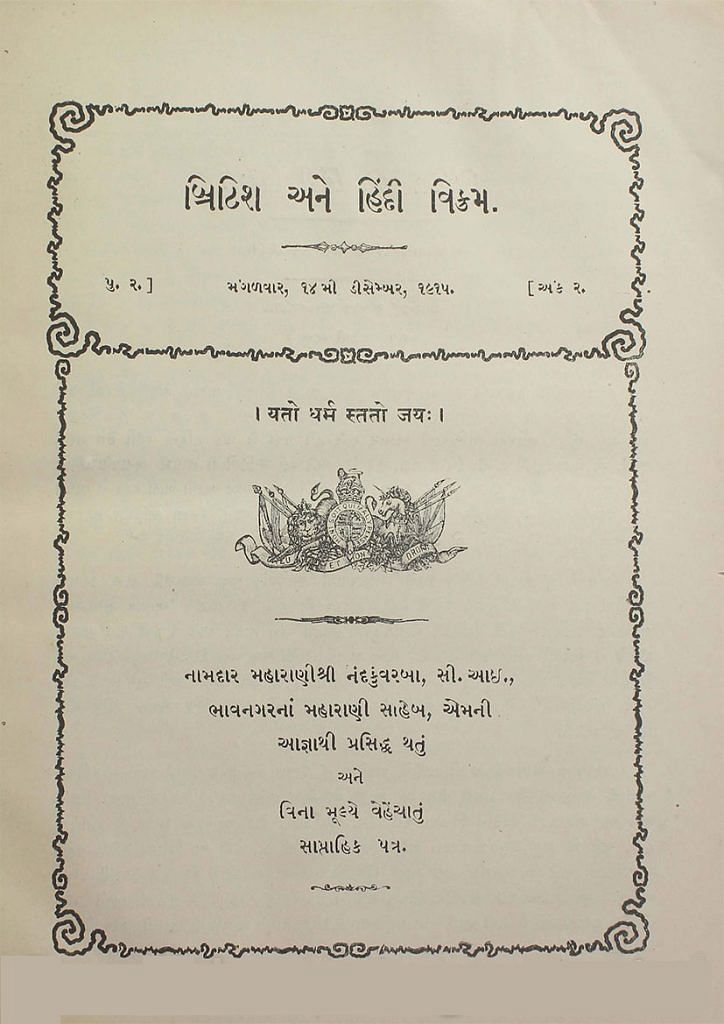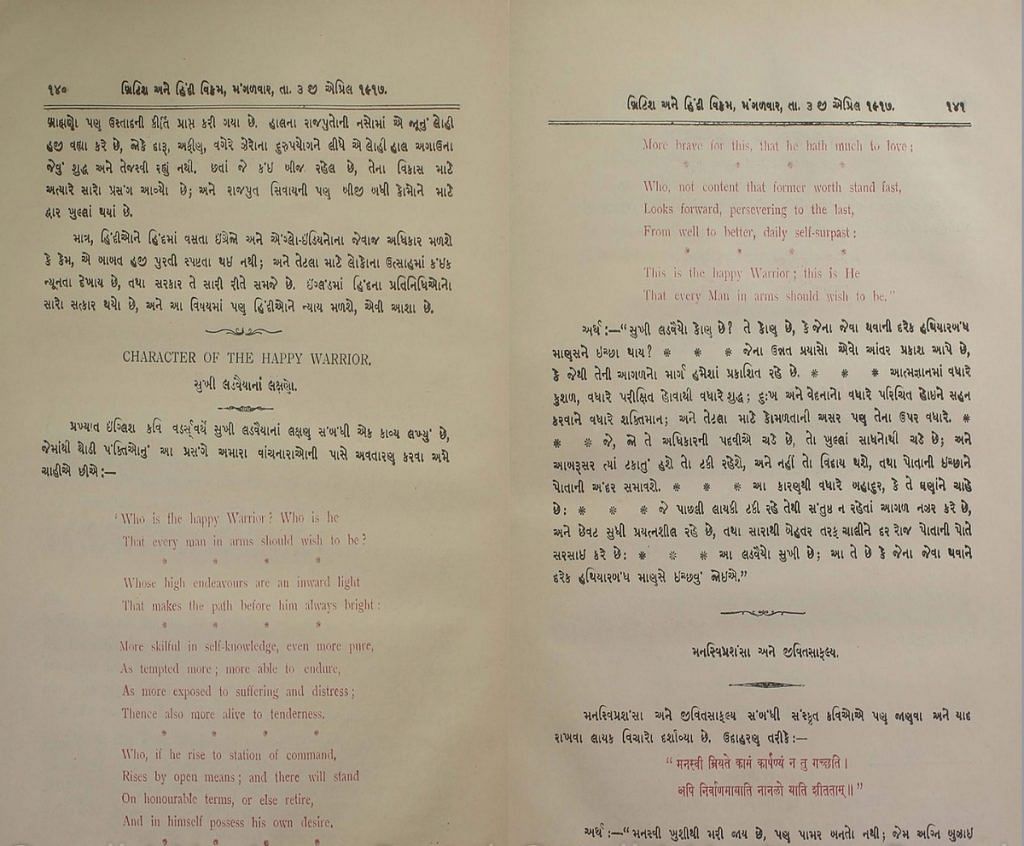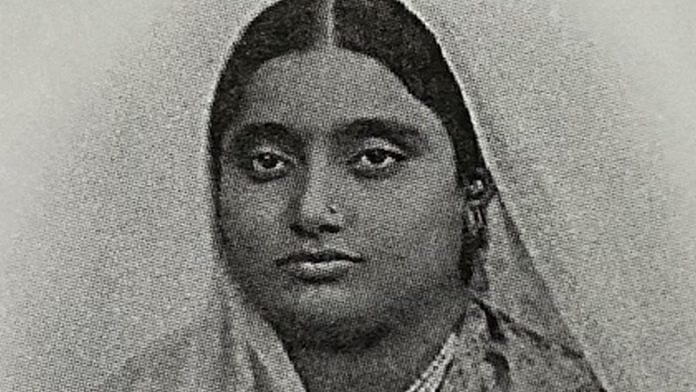The valour of Indian soldiers during World War 1 has been extensively documented in numerous books and articles. However, the tale of a Gujarati weekly magazine, published by the Maharani of Bhavnagar, is largely untold.
The Maharaja of Bhavnagar, Bhavsinh II, and the Maharani, Nandkuvarba, were known for their progressive views and also happened to be ardent supporters of the British Raj. When World War 1 broke out in 1914, the Maharaja offered his Imperial Service troops and the resources of his state, which the British government accepted in October. It decided to “use the Bhavnagar Imperial Service Lancers as the first reinforcement of ten percent for the Mysore Imperial Service Lancers proceeding on foreign service,” reported the British-run Times of India on 29 June 1915.
But the royal family’s support went beyond offering troops and a substantial donation to the Imperial Indian Relief Fund. Maharani Nandkuvarba took it upon herself to shape ideas about the war by launching a Gujarati weekly named British Ane Hindi Vikram (Valour of the British and the Indians).
This publication, which ran for more than four years, is likely the only periodical dedicated to news and articles about World War 1 in Gujarati and perhaps any Indian language. Through it, Maharani Nandkuvarba sought to boost morale about the war, dispel ‘rumours’, and even fund-raise, earning accolades from the British.
Also Read: Cocaine, Jinnah, films, azan call—Visami Sadi set benchmark for Gujarati photo magazines
News from the ‘jadavasthali’
The publication’s mission was outlined on the first page of the inaugural issue on 1 December 1914. It pointed out that few educated individuals truly understood the nature of the ‘jadavasthali’ (the internal conflict) unfolding in Europe. Beyond disseminating accurate information among the local population—particularly its targeted readership, the Rajputs—the paper also sought to provide useful facts about history and geography.
It was stated that the paper would occasionally carry special thoughts, which readers should consider as the Maharani’s own. The unnamed editor(s) of the paper noted that the Maharani would express her thoughts in person, which would be duly recorded.
Produced at the State Printing Press and released every Tuesday, the eight-page magazine featured a tagline from the Bhagavad Gita: Yato Dharma Stato Jaya (Where there is righteousness, there is victory).

The front page displayed the magazine’s name, date, issue number, and book number. It also included a note in Gujarati stating, “A weekly published by the order of the honourable Maharani Shri Nandkuvarba, C.I., Bhavnagar and distributed free of charge”.
The first issue contained an article ‘Vigrahanaan Karano’ (the reasons for the war) that spanned more than five pages, followed by ‘Ladaina Taar’ (the telegrams of the war), which included brief news items with locations and dates. The inaugural issue reported the news of the first Indian soldier, Hawaldar Gagan Singh receiving the Victoria Cross in London on 26 November 1914. Occasionally, a black and white photo was included with the publication as a “gift to the readers”.
The Maharani, unlike her namesake from Gondal, was not known for her writing skills. Therefore, she enlisted the help of renowned Gujarati poet and Bhavnagar subject Manishankar Bhatt ‘Kant’. The publication was printed in black and white, but couplets and quotes in different languages stood out in red ink. Copies of it were dispatched to Indian troops in France and other locations.
Also Read: Indulal Yajnik — beer-drinking ‘fakir’ & nationalist who started anti-Congress politics in Gujarat
‘We ought to have started such a paper’
When British Ane Hindi Vikram completed a year, all the issues were compiled and published in a book, consisting of 416 pages and 26 photographs.
It was dedicated to the governor of Bombay, Lord Willingdon, “with a heart full of love for my mother-country and hoping and praying for the long continuance of the British sovereignty and for long life to our beloved King-Emperor”.
In its ‘Books and Authors’ section, The Times of India gave a rave review to this compilation on 2 February 1916. “We ought to have started such a paper, a weekly or a fortnightly or even a monthly, for our districts, as the good it does is very great; but since Bhavnagar state has very pluckily taken the lead in the matter, we might utilise it widely and through our officials circulate…among the people of our Gujarat district,” it said.

According to the review, the Maharani arranged lectures in Gujarati to dispel “absurd and harmful rumours about the war” and the publication presented “correct facts…in an interesting manner”. The compilation included a preface from C. Mayne, the principal of Rajkot’s Rajkumar College, who noted that its content was also translated into other Indian languages.
By this time, the weekly had gained immense popularity, even beyond the borders of the Bhavnagar state. However, due to its free distribution, the publication had to issue notices explaining it could not expand the subscriber base any further.
An abridged postcard version of the weekly, named Vikramnun Bachchun (Offspring of Vikram), also gained traction. As noted by Gambhirsinh Gohil in his book Prajavatsal Rajvi, Vikramnun Bachchun likely featured photos of Indian soldiers who had won gallantry awards during the war. A set of 25 illustrated postcards was sold for Re 1, with the proceeds going “for the benefit of the war fund”, reported ToI in November 1916.
In recognition of her significant contributions to the Empire during World War 1, including the publication of British Ane Hindi Vikram, Maharani Nandkuvarba was awarded the prestigious Kaiser-i-Hind gold medal in 1917. She was subsequently also appointed as a vice president of the Society of Women Journalists, London.
Tragically, Maharani Nandkuvarba died of influenza on 9 November 1918, just two days before the armistice was signed to end World War 1. She was 29 years old. The weekly ran for a few more months after her death until its discontinuation in June 1919, but it remains a unique historical artefact and a reminder of the young Maharani and her unusual contribution to the war effort.
Urvish Kothari is a senior columnist and writer based in Ahmedabad. He tweets @urvish2020. Views are personal.
This article is a part of the Gujarat Giants series.
(Edited by Asavari Singh)






